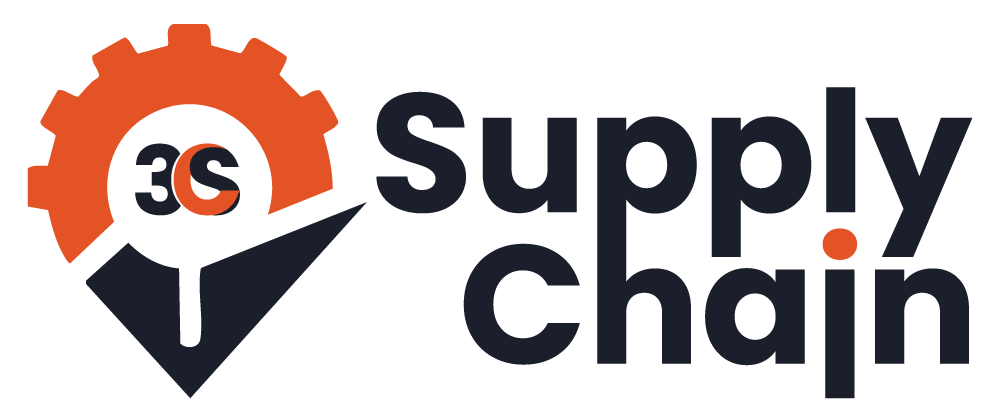You don’t need to look far to see supply chain efficiency at work. It’s in the early restock of a grocery shelf after a morning rush—when deliveries land on time and the store avoids empty aisles. It’s in the route planning of a delivery driver who skips bottlenecks and keeps packages moving, cutting delays before they start. It’s in a bakery where ingredients arrive just as needed, keeping production steady and shelves filled without overstock.
These moments don’t make headlines, but they shape how businesses run and how products reach people. Efficiency in the supply chain isn’t just about saving time—it’s about preventing disruption, managing flow, and keeping operations predictable.
If your supply chain works in sync, fewer decisions turn reactive. That’s the real advantage—less scrambling, more planning. And often, that’s what makes all the difference in the outcome.
Table of Contents
What Is Supply Chain Efficiency?
Supply chain efficiency refers to how smoothly goods move from production to delivery using the fewest resources possible. It focuses on minimizing waste, reducing costs, and cutting delays while still meeting customer expectations. Whether it’s transporting products across regions or coordinating with suppliers, efficiency measures how well each step supports the next without unnecessary hold-ups.
This isn’t just about speed. It’s also about how well resources are planned and used inventory, transportation, time, and labor all play a role. Unlike manufacturing efficiency, which is limited to production output, supply chain efficiency spans the entire journey from sourcing to delivery. When operations align with clear workflows and timely coordination, it becomes easier to maintain consistency even when conditions shift.
Understanding this helps businesses respond faster, reduce risks, and remain competitive especially in complex or high-demand environments.
Why Does Efficiency Matter in Supply Chains?
- Minimizes delays across operations
Efficient supply chain management helps ensure products reach their destination without unnecessary holdups, improving flow from production to delivery. - Reduces costs in logistics operations
Streamlined routes, fewer stockouts, and smarter planning can cut transport and holding costs, allowing leaner operations. - Improves inventory control
With better forecasting and supply coordination, businesses avoid overstocking or understocking maintaining optimal inventory levels. - Supports consistent product availability
A well-tuned supply chain keeps goods moving steadily, preventing gaps on shelves and avoiding disruptions in service. - Increases customer satisfaction
Timely deliveries and product availability improve customer experience, leading to repeat business and stronger brand trust. - Enables faster response to demand changes
When efficiency is built in, companies can adjust quickly to market shifts without breaking the flow. - Boosts overall productivity
From manufacturing to final delivery, less time is wasted on rework, idle stock, or miscommunication keeping teams focused. - Strengthens competitiveness
Businesses with efficient delivery systems and reliable timelines often outperform those caught in avoidable slowdowns.
Supply chain efficiency isn’t just a back-end concern it influences how products move, how customers are served, and how smoothly the entire system runs.
How Do Efficiency and Effectiveness Differ in Supply Chains?
| Aspect | Supply Chain Efficiency | Supply Chain Effectiveness |
|---|---|---|
| Definition | Focuses on minimizing cost, time, and resource use across operations. | Focuses on fulfilling customer needs and market demand accurately and on time. |
| Primary Goal | Reduce waste, streamline processes, and control internal costs. | Deliver the right product, in the right quantity, at the right place and time. |
| Perspective | Inward-facing – centered on internal operations and logistics. | Outward-facing – centered on customer experience and market performance. |
| Key Metrics | Inventory turnover, cost per unit, delivery time, resource utilization. | Order fulfillment rate, customer satisfaction, service level, market coverage. |
| Risk | Can reduce flexibility and responsiveness if overly optimized. | Can increase costs if overextended or if demand is misjudged. |
| Strength | Enables lean operations and cost savings when demand is stable. | Increases agility and customer retention in dynamic market conditions. |
| Example Scenario | Limiting warehouse stock to cut storage costs. | Stocking additional units to meet unexpected demand surges. |
| Strategic Role | Drives internal productivity and long-term cost control. | Supports revenue growth, brand loyalty, and customer service standards. |
| Common Trade-Off | Higher efficiency may reduce service speed or responsiveness. | Higher effectiveness may drive up operating or inventory costs. |
| Ideal Balance | Efficiency ensures sustainable operations; effectiveness ensures relevance in the market. | Both must be aligned for optimal supply chain performance. |
How to Gauge Supply Chain Efficiency
To measure supply chain efficiency effectively, focus on consistent, actionable indicators that reflect flow, speed, accuracy, and resource use. Below are essential ways to evaluate how well your supply chain performs:
- Order Cycle Time
Track the total time from order placement to delivery. Shorter cycles often reflect smoother coordination across functions. - On-Time Delivery Rate
Measure how often goods arrive by their promised date. High punctuality is a core signal of a reliable supply chain process. - Inventory Turnover Ratio
Evaluate how frequently inventory is sold and replaced. A higher ratio typically signals better demand forecasting and efficient stock movement. - Order Accuracy Rate
Monitor how many orders are fulfilled without errors in quantity, product, or packaging. Accurate deliveries reduce returns and customer complaints. - Damage-Free Delivery Percentage
Check how often products arrive without damage. This reflects on packaging efficiency, handling care, and transportation quality. - Fulfillment Cost per Order
Analyze costs associated with picking, packing, and shipping each order. Lower fulfillment costs without compromising service indicate lean operations. - Warehouse Efficiency
Track metrics like space utilization, picking speed, and storage accuracy. These reflect how well internal logistics are optimized. - Stockout Frequency
Measure how often products are unavailable when needed. Frequent stockouts signal issues in demand planning or supplier reliability. - Return Rate
Keep an eye on how often goods are returned due to fulfillment errors or product defects. Lower rates point to better operational control. - Supplier Performance Score
Assess lead time consistency, product quality, and responsiveness from suppliers. Strong supplier reliability supports long-term efficiency.
What Are the Steps to Enhance Supply Chain Efficiency?
Improving supply chain efficiency requires consistent, actionable steps that focus on reducing waste, speeding up delivery, and improving coordination. Here are key areas that help streamline operations without compromising quality:
- Streamline Supplier Management
Build dependable relationships with key suppliers to reduce lead times and ensure predictable delivery schedules. - Optimize Transportation Routes
Adjust delivery routes using real-time traffic insights to avoid delays and reduce fuel costs. - Adopt Inventory Automation
Use automated systems to manage stock levels, prevent overstocking, and minimize errors in order fulfillment. - Enable Real-Time Data Sharing
Allow suppliers and distributors to access real-time sales and inventory data to align production with demand. - Diversify Supplier Base
Reduce reliance on a single source by engaging with multiple vendors, increasing resilience during disruptions. - Improve Demand Forecasting
Analyze seasonal trends and customer buying patterns to align stock levels and avoid under or overproduction. - Strengthen Reverse Logistics
Implement efficient return processes to handle defective goods quickly and recover value through repairs or replacements. - Invest in Employee Training
Train teams across logistics, procurement, and fulfillment to ensure accurate handling, packaging, and communication. - Standardize Order Fulfillment Processes
Develop clear procedures for picking, packing, and shipping to reduce variation and boost productivity. - Implement Continuous Monitoring
Track key metrics like order cycle time, fill rate, and delivery accuracy to identify and correct bottlenecks proactively.
Conclusion
Supply chain efficiency isn’t just a behind-the-scenes goal it’s a daily factor in how goods move, costs stay controlled, and expectations are met. Whether it’s about reducing delays, minimizing waste, or improving coordination across the supply chain, every small improvement builds stronger systems over time.
In today’s volatile landscape, businesses that focus on efficient supply chain practices are more likely to adapt, recover, and grow. From inventory flow to delivery accuracy, the smallest gains in efficiency can lead to better service and lower costs.
A leaner supply future depends on clarity, responsiveness, and the ability to spot and fix weak links before they break. It’s not about cutting corners it’s about making every step count.

